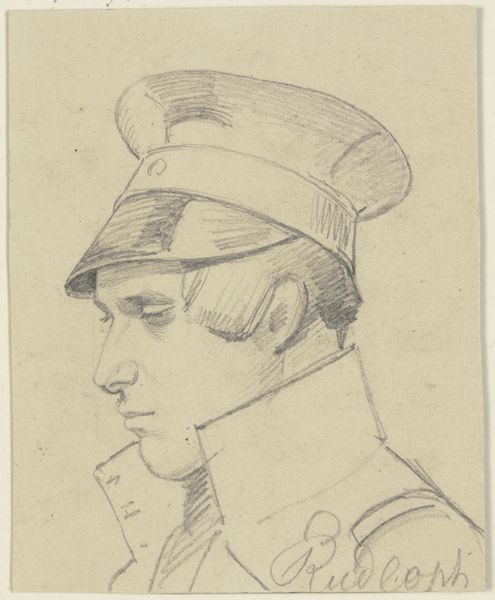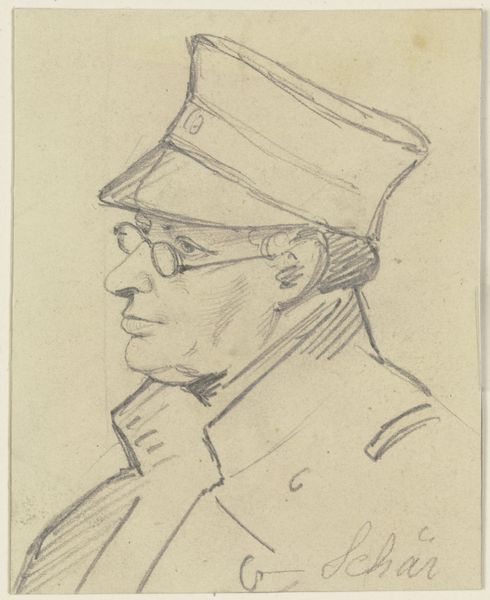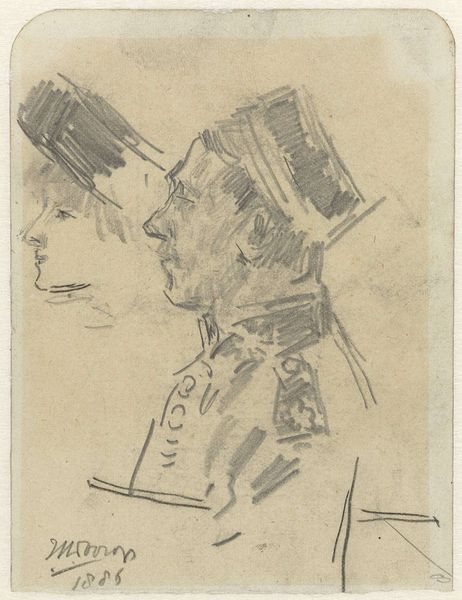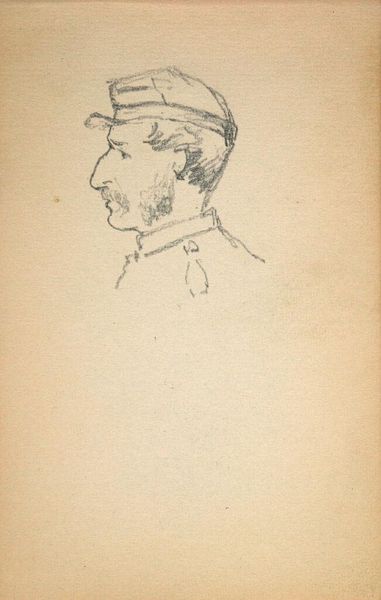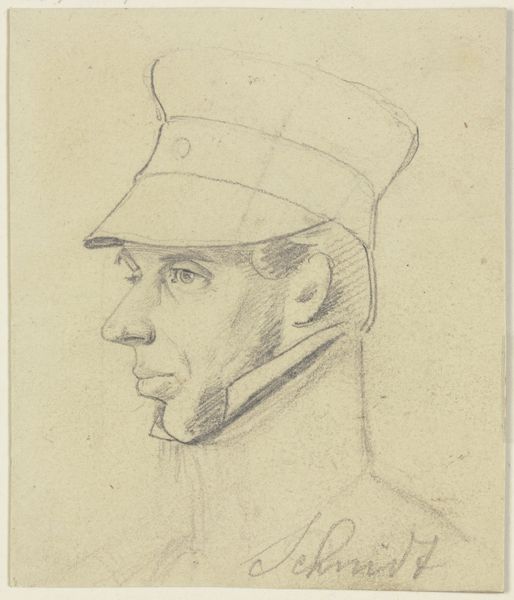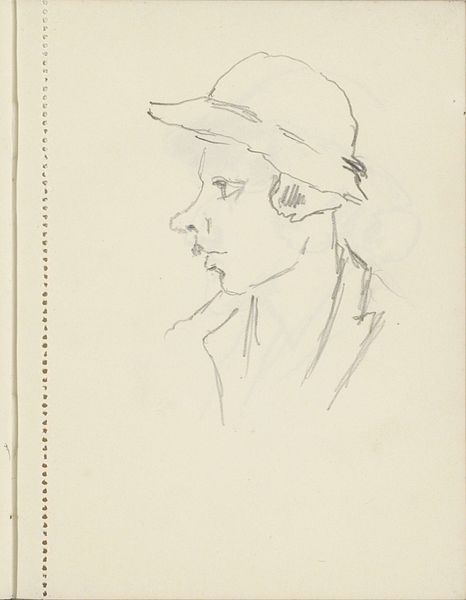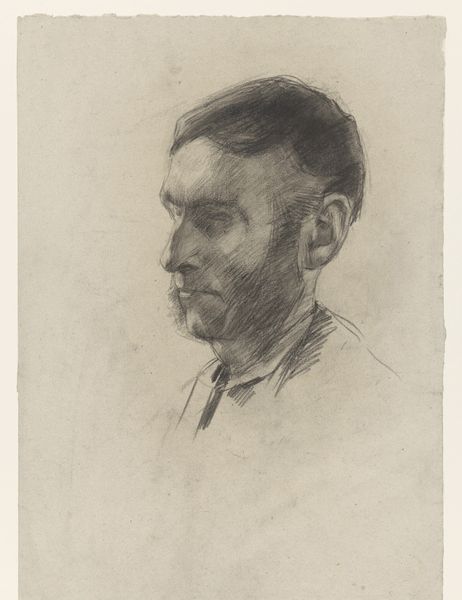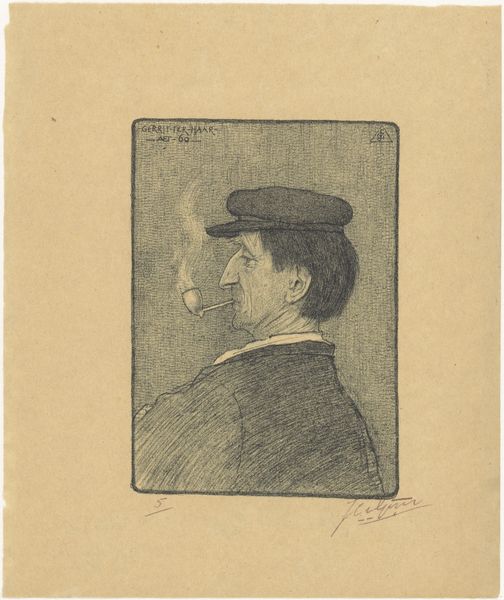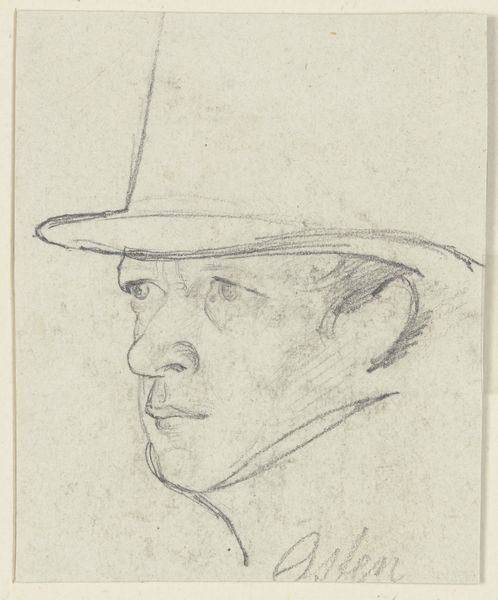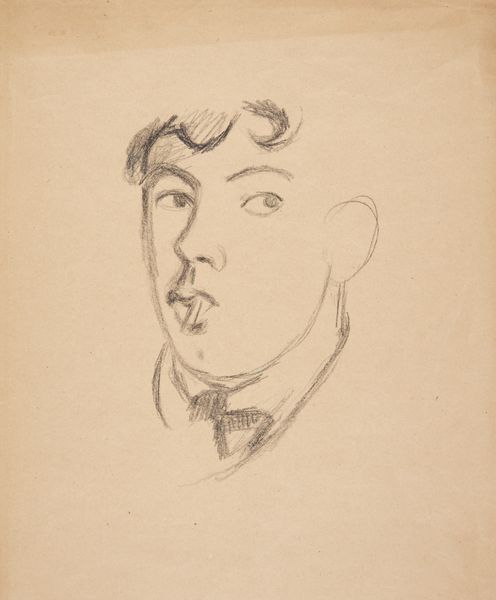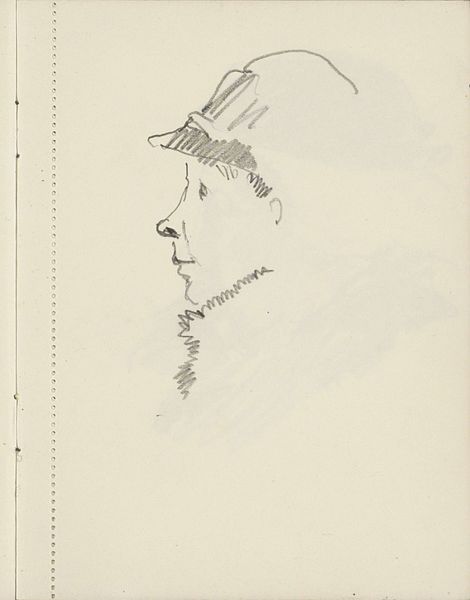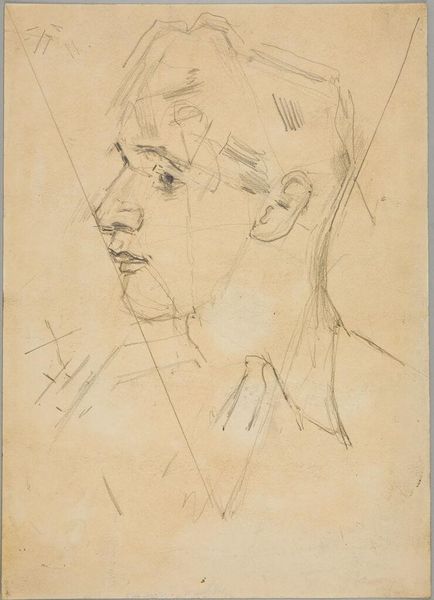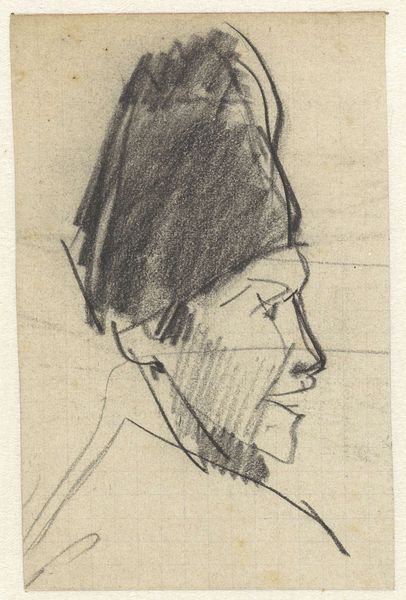
drawing, pencil
#
portrait
#
pencil drawn
#
drawing
#
impressionism
#
pencil sketch
#
pencil
#
realism
Copyright: Rijks Museum: Open Domain
Curator: Breitner’s “Buste van een man met hoofddeksel,” or “Bust of a Man with Head Covering,” rendered in pencil between 1883 and 1885, immediately strikes me with its somber mood. What's your initial reaction? Editor: A distinct aura of melancholic resolve, a pensive intensity—particularly visible within his downward cast. The soft yet angular lines speak of the artist's skill. This really shows what impressionism means through pencil lines, and a bit of realism to render the expression so distinctively! Curator: Absolutely. Breitner, active in a period of significant social change, captured figures often marginalized or overlooked by mainstream society. I wonder if that affects the sitter in any way. Is the attire chosen purposefully? Are there political elements at play here? Editor: The cap suggests a working-class identity, certainly. It gives me laborer/serviceman vibes! Caps during that period were practical garments; thus it speaks volumes about him being common folk. Furthermore, his almost rigid, tight suit emphasizes social conformity versus his facial expression. What does the cap bring you in terms of iconographical symbolism? Curator: For me, the head covering speaks to ideas of anonymity, but also perhaps, the burdens placed upon working men and other members of Dutch society— the cap is almost a visual burden, not only masking identity but weighing down the head. Are we supposed to understand it is as some symbolic social signifier? Editor: An interesting interpretation, I do love the symbolism it embodies from your socio-political view! Speaking aesthetically, the artist is also intentionally contrasting light and shadow. Look at how he builds a deeper contrast between dark neck-area with a single lighting on the left face. The pencil becomes a tool for capturing depth! Curator: I concur! Now seeing the light playing out like that reminds me of how we project emotions of melancholy to the male working class that may or may not be there—maybe our vision is so tainted through lens and experience it may or may not accurately portray the state, maybe that contrast between light and darkness in a sense. I am always grateful and cautious when art challenges the social-political context! Editor: And to conclude, the rough sketches combined with a clear expression opens a dialogue beyond period definition, encouraging conversation between artwork and society, yesterday and today!
Comments
No comments
Be the first to comment and join the conversation on the ultimate creative platform.
